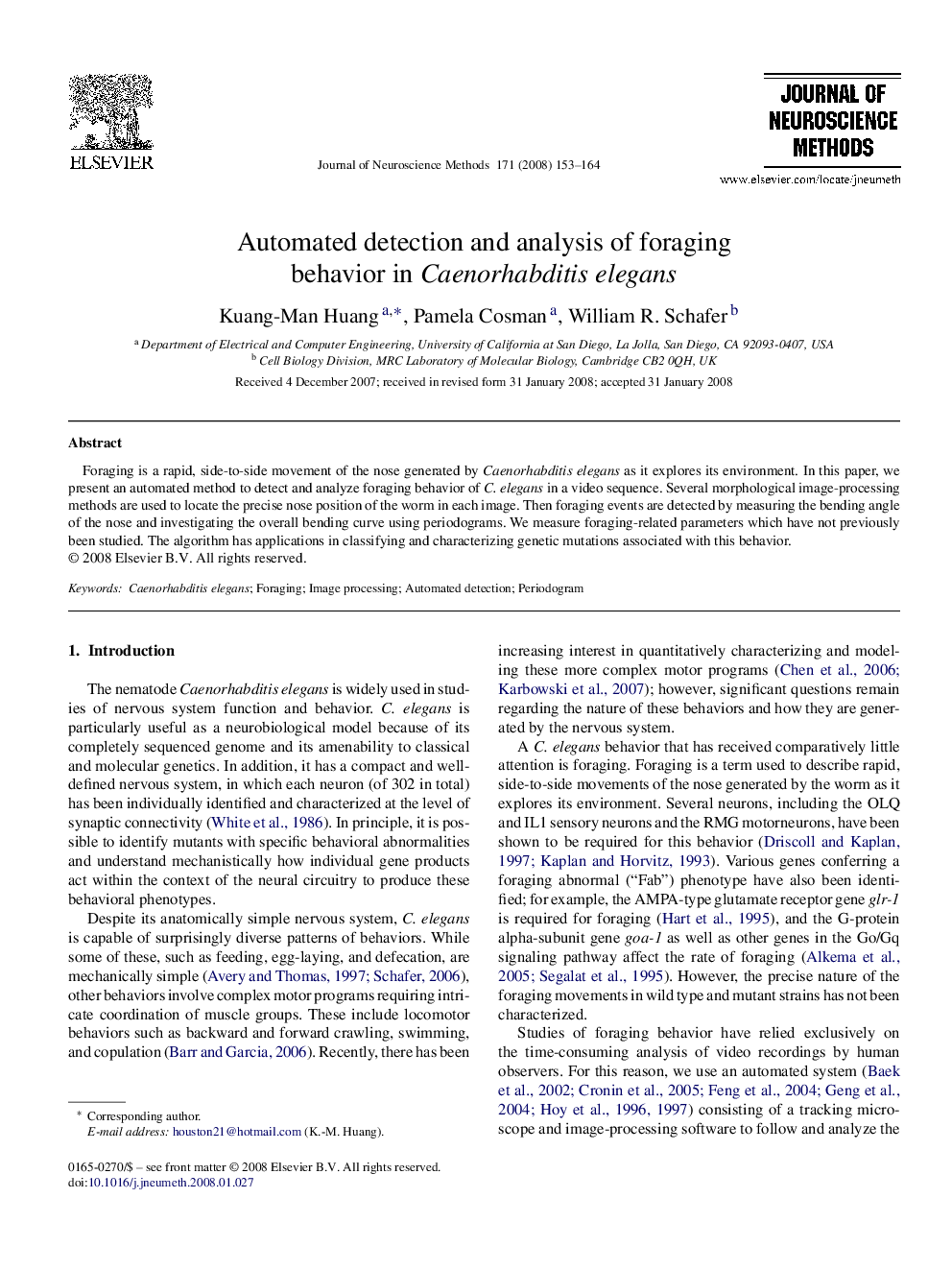| Article ID | Journal | Published Year | Pages | File Type |
|---|---|---|---|---|
| 4336193 | Journal of Neuroscience Methods | 2008 | 12 Pages |
Abstract
Foraging is a rapid, side-to-side movement of the nose generated by Caenorhabditis elegans as it explores its environment. In this paper, we present an automated method to detect and analyze foraging behavior of C. elegans in a video sequence. Several morphological image-processing methods are used to locate the precise nose position of the worm in each image. Then foraging events are detected by measuring the bending angle of the nose and investigating the overall bending curve using periodograms. We measure foraging-related parameters which have not previously been studied. The algorithm has applications in classifying and characterizing genetic mutations associated with this behavior.
Related Topics
Life Sciences
Neuroscience
Neuroscience (General)
Authors
Kuang-Man Huang, Pamela Cosman, William R. Schafer,
